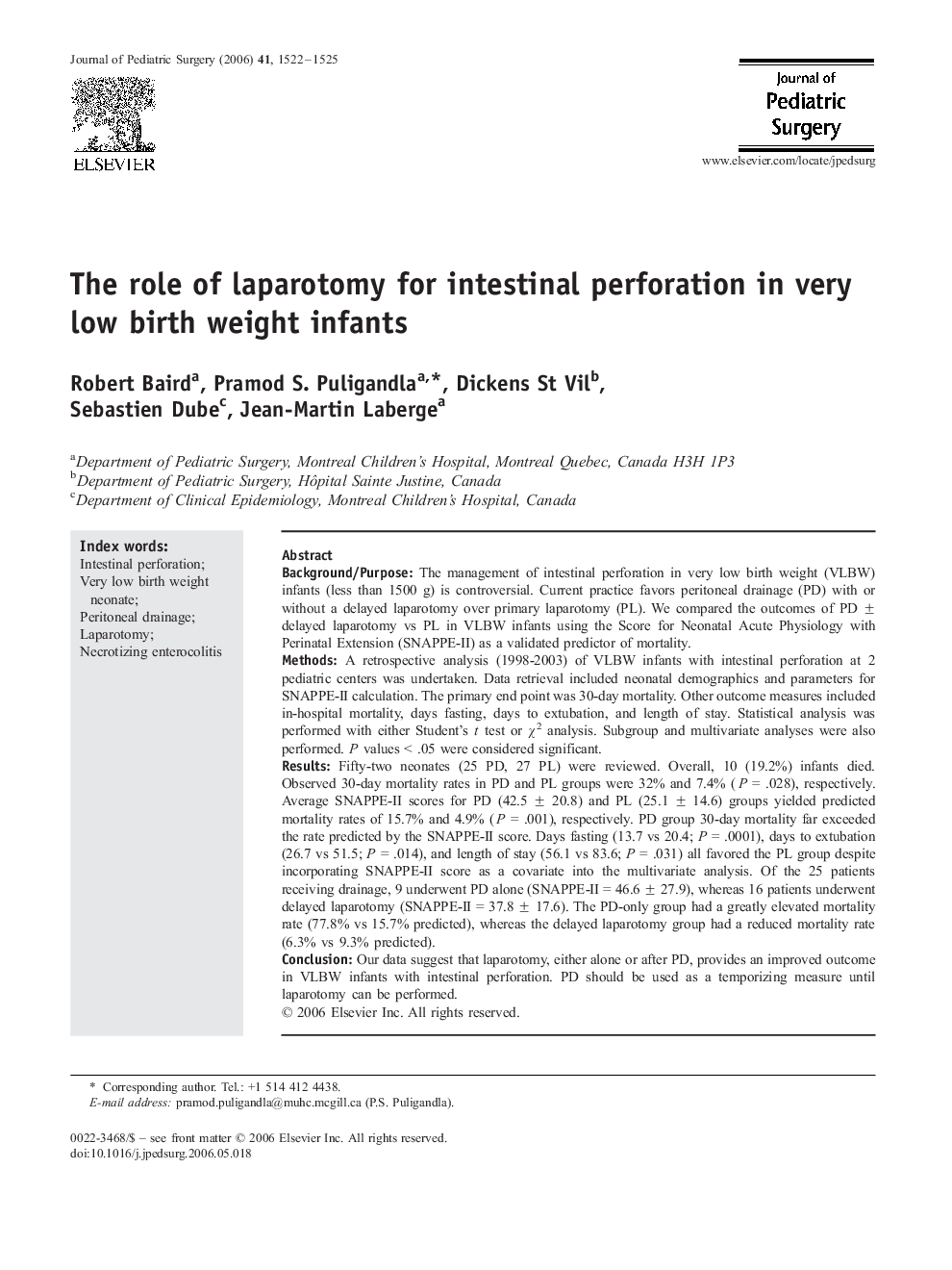| Article ID | Journal | Published Year | Pages | File Type |
|---|---|---|---|---|
| 4160507 | Journal of Pediatric Surgery | 2006 | 4 Pages |
Background/PurposeThe management of intestinal perforation in very low birth weight (VLBW) infants (less than 1500 g) is controversial. Current practice favors peritoneal drainage (PD) with or without a delayed laparotomy over primary laparotomy (PL). We compared the outcomes of PD ± delayed laparotomy vs PL in VLBW infants using the Score for Neonatal Acute Physiology with Perinatal Extension (SNAPPE-II) as a validated predictor of mortality.MethodsA retrospective analysis (1998-2003) of VLBW infants with intestinal perforation at 2 pediatric centers was undertaken. Data retrieval included neonatal demographics and parameters for SNAPPE-II calculation. The primary end point was 30-day mortality. Other outcome measures included in-hospital mortality, days fasting, days to extubation, and length of stay. Statistical analysis was performed with either Student's t test or χ2 analysis. Subgroup and multivariate analyses were also performed. P values < .05 were considered significant.ResultsFifty-two neonates (25 PD, 27 PL) were reviewed. Overall, 10 (19.2%) infants died. Observed 30-day mortality rates in PD and PL groups were 32% and 7.4% (P = .028), respectively. Average SNAPPE-II scores for PD (42.5 ± 20.8) and PL (25.1 ± 14.6) groups yielded predicted mortality rates of 15.7% and 4.9% (P = .001), respectively. PD group 30-day mortality far exceeded the rate predicted by the SNAPPE-II score. Days fasting (13.7 vs 20.4; P = .0001), days to extubation (26.7 vs 51.5; P = .014), and length of stay (56.1 vs 83.6; P = .031) all favored the PL group despite incorporating SNAPPE-II score as a covariate into the multivariate analysis. Of the 25 patients receiving drainage, 9 underwent PD alone (SNAPPE-II = 46.6 ± 27.9), whereas 16 patients underwent delayed laparotomy (SNAPPE-II = 37.8 ± 17.6). The PD-only group had a greatly elevated mortality rate (77.8% vs 15.7% predicted), whereas the delayed laparotomy group had a reduced mortality rate (6.3% vs 9.3% predicted).ConclusionOur data suggest that laparotomy, either alone or after PD, provides an improved outcome in VLBW infants with intestinal perforation. PD should be used as a temporizing measure until laparotomy can be performed.
